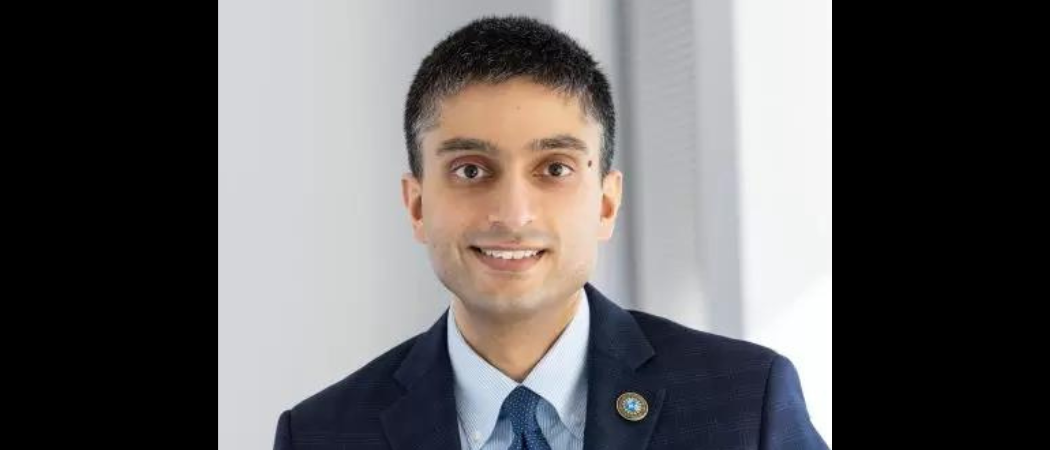The Directorate for Technology, Innovation and Partnerships, set up to create real world impact in the US, is very much open to global cooperation, its director tells Science|Business

Erwin Gianchandani is the US National Science Foundation’s assistant director for Technology, Innovation and Partnerships, leading the newly established TIP Directorate. Photo: Amanda Joy Mason / NSF
The US National Science Foundation’s (NSF) new impact-focused directorate is keen to work with partners outside the US, its director Erwin Gianchandani says, as it begins to roll out hundreds of millions of dollars to create new industry clusters in relatively neglected parts of the county.
The Directorate for Technology, Innovation and Partnerships (TIP), the first new NSF directorate for 30 years, has a mission to create growth and jobs in the US through boosting “use-inspired” R&D, but is also beginning to work with global research partners.
“We are very open to collaborating with what we sometimes call like-minded countries, countries that have shared values with the US,” Gianchandani told Science|Business as the directorate approaches its second birthday.
TIP’s approach is around halfway between the basic research focus of the rest of the NSF, and the ultra-applied Defense Advanced Research Projects Agency, Gianchandani explains. It’s out to create real world impact, but is not driven by a need to create specific new technologies for the government, as Darpa does for the US military.
Since it was founded in 2022, TIP’s budget more than doubled to $880 million last year, making it a relative winner in the constant research budget wranglings in Washington DC.
The NSF wants this to increase further to nearly $1.2 billion this year, although with cuts across the board planned for numerous science agencies, they may fall short.
Still, TIP has started getting some hefty grants out the door. In January it announced ten new regional innovation engines, clusters of research institutes and private companies that hope to build up industrial centres specialising in everything from energy storage to regenerative medicine.
The point of these engines is that they are not in the US’s usual innovation hotspots. Instead they include agricultural technology in North Dakota, semiconductor packaging in central Florida, and textile innovation in North Carolina.
Each will get $15 million to start with, and if they hit certain milestones, receive up to $160 million over the next decade, plus state and private funding too.
Open to the world
This might sound like a very US-focused project – after all, the purpose is to stimulate US regions that haven’t always been winners from new innovation.
But this will change somewhat after the first year, Gianchandani said. “We are open after year one to be able to bring in partners from countries with shared value propositions.”
For example, in a few weeks the central Florida engine should be bringing in a South Korean partner. South Korea is investing heavily on becoming a major player in chip packaging, the art of boosting semiconductor performance through clever structures or cooling technologies.
There are no European partners lined up yet, to the best of Gianchandani’s knowledge. “But the teams are just getting going,” he said.
“I think any of the topics that we appointed them to work on could engage with colleagues in the EU, because you have very strong expertise there as well,” he said. “So I think we’d welcome that.”
Of course, there’s unlikely to be any money from TIP for non-US partners. But Europeans could join with their own funding, Gianchandani said.
There are other TIP programmes that also encourage oversees collaboration: the convergence accelerator programme, for example, which is another impact-focused interdisciplinary form of grant, distributed across multiple teams that try to come up with various solutions.
Recent awards have gone to teams trying to improve US freshwater systems, or quality of life for disabled people.
“There are some very compelling examples in a couple of tracks where we've partnered directly with governments […] and we've partnered with a nation in the EU as well,” said Gianchandani.
TIP is also beginning to think about drawing up an international strategy. “We don't yet have a strategy just yet,” he said. “But we want to try to make sure that we do this in a very strategic way with meaningful relationships and collaborations.”
Different forms of impact
In TIP’s grants so far, there’s naturally a focus on getting research findings out of the lab, as with any commercialisation agency.
But while the directorate does want to grow the US economy and create jobs, it’s not just about the traditional route of spinning out start-ups on the back of new research results.
“Over time, there's been a growing appreciation that research can have a number of different forms of impact,” said Gianchandani.
The aim is to get academic research to interact not just with industry, but society and state, local, city and tribal government as well.
“It's not just about market push - pushing solutions to the market - but it's about the market coming in and really demanding and now wanting to pull out some of the solutions as well,” he said.
TIP, for example, is one of the NSF directorates involved in a recently unveiled grant stream called “Responsible Design, Development, and Deployment of Technologies”, to make sure ethical, legal, community and societal considerations are baked into new tech.
And the NSF as a whole is reportedly planning to change its rules to better reward potential “societal benefits” when awarding grants.
Gianchandani hopes that TIP can “motivate research questions that can then maybe find their way not into a product that's on the market by a start-up or a company, but that can find their way as a solution to the way people live and operate on a day-to-day basis” – be it in education, healthcare, or simply commuting to and from work.





 A unique international forum for public research organisations and companies to connect their external engagement with strategic interests around their R&D system.
A unique international forum for public research organisations and companies to connect their external engagement with strategic interests around their R&D system.